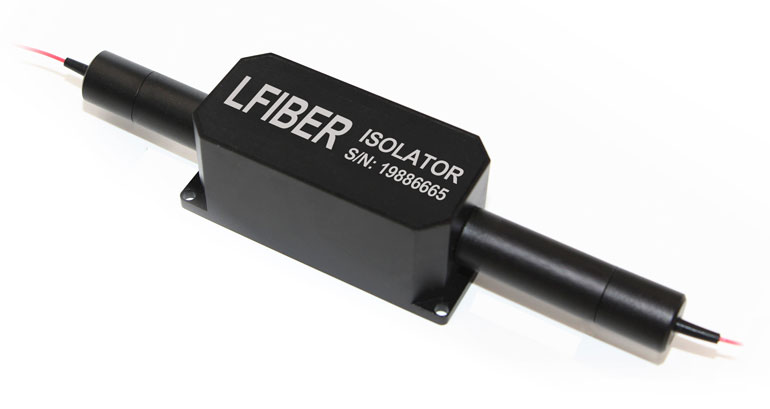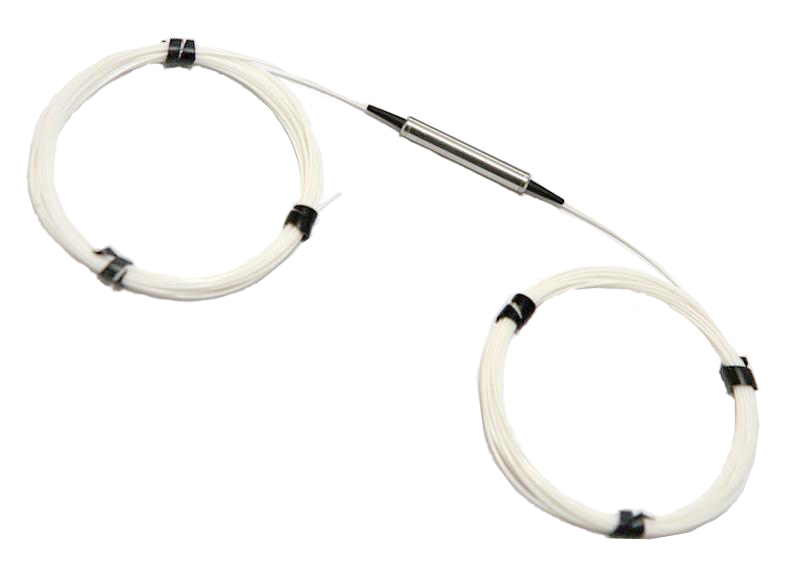

Therefore, exploring new MO materials with a higher temperature stability is important for solving temperature stability issues. Fundamentally, these problems originated from the temperature dependence of the Faraday effect of the MO material, which cannot be fully resolved by the device design.

However, the device still shows a deteriorated performance due to the temperature dependence of the MO effect. Due to the low thermo-optic coefficient of SiN, the isolators maintained a relatively stable operation wavelength, showing a small wavelength drift within 4 nm in a temperature range of 20–70 ☌. A similar result is also observed in SiN-based optical isolators reported in our previous work. However, the device still suffers from temperature dependence for forward propagation, leading to higher insertion loss when temperature is changed. The temperature dependence of the RPS and NRPS waveguide cancels out, results in an almost temperature insensitive transmission spectrum for the backward propagation direction in a temperature range of 20–60 ☌. designed MZI optical isolators with a special designed length of the reciprocal phase shift (RPS) waveguide. They observed that the nonreciprocal-phase shift (NRPS) effect of Ce:YIG decreases when the material is heated up by an integrated electromagnet, which results in a reduced bandwidth and isolation ratio.

characterized silicon-integrated ring resonator optical isolators based on bonded Ce:YIG epitaxial thin films. The Faraday rotation shows temperature dependence of about −20 deg The Faraday rotation monotonically decrease with increasing temperature. studied the Faraday rotation angle of epitaxial Ce:YIG thin films from −175 ☌ to +25 ☌. Several previous works were carried out to address the temperature stability problem of Ce:YIG. This problem is particularly prominent for phase-sensitive devices such as the Mach–Zehnder interferometer (MZI) based optical isolators, which influences both the isolation ratio and insertion loss, resulting in a narrow operation temperature range. However, Ce:YIG show a stronger temperature dependence of the Faraday rotation, leading to large drift of the operation wavelength as a function of temperature. For practical applications, on-shelf bulk optical isolators or circulators using bismuth-doped rare earth iron garnet materials usually show a high performance in the temperature range from −20 ☌ to 70 ☌. Silicon-integrated MO nonreciprocal photonic devices including optical isolators, circulators, modulators, and optical switches have been developed, showing a high isolation ratio, low insertion loss, and fast switching/modulation speed. In the past decade, significant progress has been achieved in bonding or deposition of MO garnet thin films on silicon, such as cerium-doped yttrium iron garnet thin films (Ce:YIG). At present, rare earth-doped yttrium iron garnet (RIG) is the most widely-used magneto-optical material in integrated MO devices. Integrated magneto-optical (MO) isolators and circulators are key components for silicon-integrated photonic circuits (PICs).


 0 kommentar(er)
0 kommentar(er)
